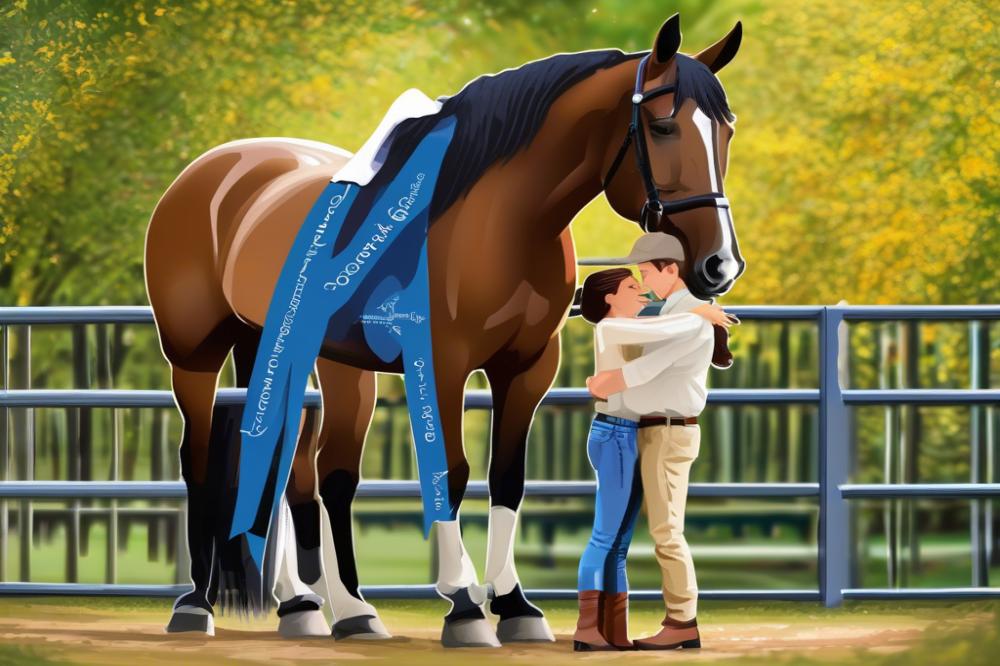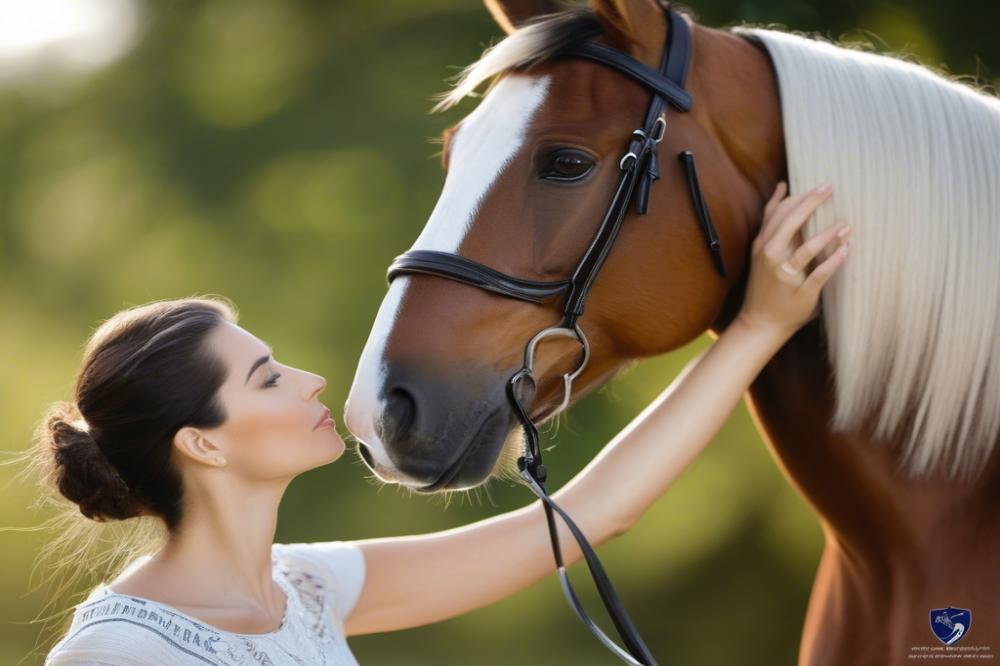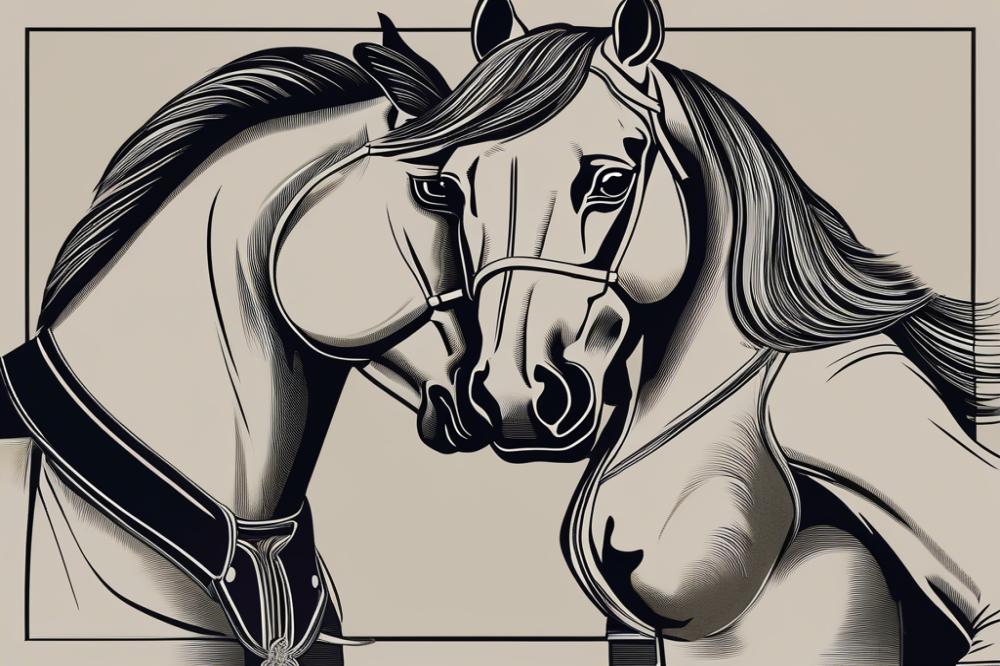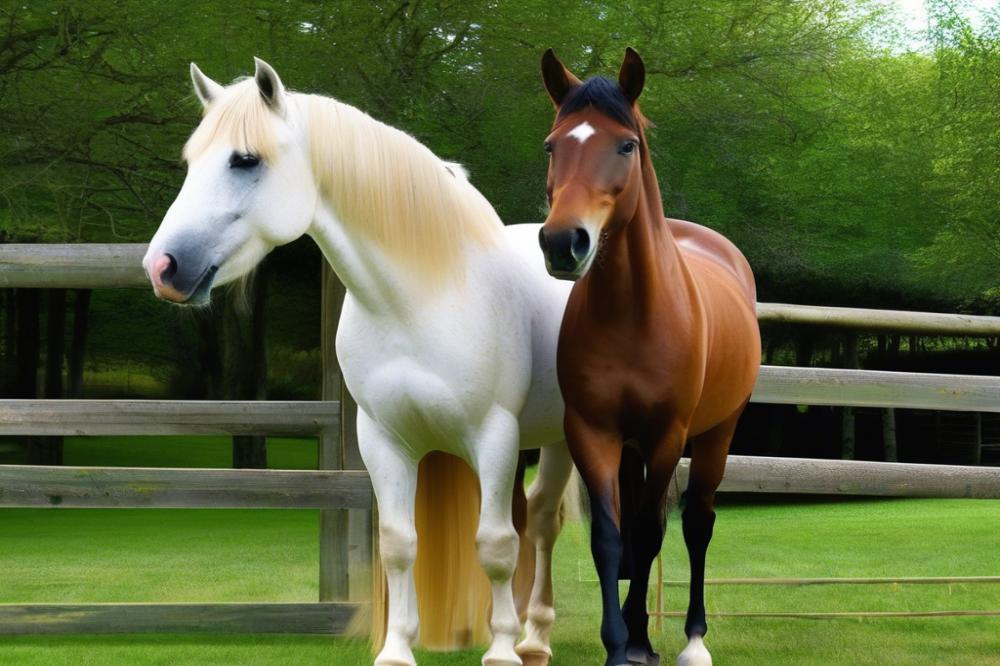Understanding Equine Affection
When we think of our beloved horses, we can’t help but feel a warm glow inside, especially when they show signs of affection. Horses, with their big hearts and even bigger personalities, communicate their feelings in ways that can be quite touching. Understanding how these gentle giants express love is not only fascinating—it’s vital for building a strong bond between horse and human. A well-cared-for horse can become a true friend, helping to bridge the gap in horse-human interaction.
Ever noticed how your horse nudges you with its nose or stands a little closer than usual? These behaviors are often signs of horse emotions that may indicate affection and comfort. Sometimes, it feels like a brown horse can read our minds; it’s as if they know when we need a little extra support. By paying attention to these cues, we can enrich our relationships and provide better horse care. After all, being in tune with an animal’s emotions brings us closer together, much like old friends sharing a laugh after a tough day.
This knowledge also aids us in understanding how horses communicate, which can sometimes feel like deciphering a secret code. Their bodies tell stories that words can’t express, and learning these signs can make a significant difference. The excitement of watching a horse play with its buddies or relax in a sunny spot reveals that these animals experience a range of emotions, allowing us a glimpse into their world. So, next time you find yourself pondering the camel vs horse size comparison, remember that these creatures aren’t just big; they’re deeply emotional beings in their own right.
In the end, nurturing a friendly relationship with a horse isn’t solely about riding or grooming. It’s about connecting, understanding, and recognizing the ways they show affection. Just like people, horses have personalities and moods that fluctuate. Being attuned to these nuances enhances not only our enjoyment but also the horses’ well-being. Ready to explore more about how to deepen this relationship? Let’s saddle up and dive into the wonderful world of equine affection!
What is Affection in Horses

Definition of Affection in Horses
Affection in horses is about the bonds they form with each other and with humans. When a horse feels affection, it often shows calm and friendly behavior. Clear signs include nuzzling, standing close, or even sharing their space. These acts reveal a deeper emotional connection. It’s like a warm hug in horse language!
Comparison to Affection in Other Animals
In many ways, equine behavior can resemble affection seen in dogs and cats. Just like a dog wags its tail, a horse may perk up its ears or whinny happily. Both species display joy and comfort when they’re around those they trust. However, horses are more subtle. They often express feelings through body language rather than vocalizations. Watching closely can help you understand their unique forms of communication.
Scientific Basis of Equine Emotions
Scientists study horse emotions to learn more about how they feel and think. Research suggests horses can experience a range of emotions, much like humans. They’re capable of showing love and happiness when they interact with people. This has implications for horse care. Being attentive to these feelings fosters better relationships between horses and their humans. Understanding an equine’s emotional state improves communication. Human caregivers need to be aware of these nuances to form strong bonds with their horses. Emotions influence behavior and how horses handle various situations.
When you think of horse-human interactions, remember that affection plays a vital role in their lives. It’s not just about feeding or grooming; it’s about connection. Just as we enjoy companionship, so do our four-legged friends. They thrive on trust and understanding, which leads to a happier, healthier existence.
Common Behaviors of Horses Showing Affection

Nuzzling and Nudging
When horses feel close to someone, they often show it through nuzzling. A horse may press its nose against you as if saying “hello” in its own special way. Sometimes, they might nudge with their head, a gentle reminder that they like your company. This behavior indicates comfort and trust. It’s similar to how we might hug or touch our friends. They can express their feelings non-verbally, which is part of their unique equine behavior.
Grooming and Mutual Grooming
Grooming is another significant way horses show affection. They enjoy grooming each other; it’s like their version of a spa day. When two horses stand close together, you might see one nibbling or licking the other’s neck or back. This is a sign of friendship and comfort. If a horse turns its back to you, it may also invite you to scratch it. Horse care often includes these kinds of bonding moments. It strengthens the connection between horses and humans alike.
Soft Eyes and Relaxed Body Language
Pay attention to a horse’s eyes. Soft eyes usually mean a horse is relaxed and content. Their eyelids may droop slightly, creating a gentle look. You might also notice their posture. A relaxed horse will stand with its head low and ears in a neutral position. This kind of relaxed body language signals comfort and trust. It’s their way of saying, “I feel safe with you.” Horse emotions are complex, but these signs make it clear when they feel affection.
Following and Staying Close
Sometimes, a horse will follow you around like a loyal puppy. A horse that chooses to stick close is demonstrating a strong bond. This behavior shows they enjoy your presence. They may wander off occasionally, but when they return, it shows they want to be near you. You might even find a horse standing at your side, munching on grass while keeping an eye on you. This closeness is a beautiful part of horse-human interaction. It reveals their ability to communicate their feelings without saying a word.
Vocalizations as Expressions of Affection

Understanding Horse Vocalizations
Horses have their own special way of talking. They use different sounds to express how they feel. If you ever hear a horse nicker or whinny, you might wonder what it means. These sounds can tell you a lot about their emotions. Just like we use our voices to chat with friends, horses communicate through vocalizations. Listening carefully can give you a peek into their world.
Meaning of Nickers and Whinnies
Nickers are often soft and sweet. Imagine a gentle whisper between friends. When horses nicker, it shows they are happy to see someone. It might be a caregiver or a fellow horse. Whinnies, on the other hand, can be louder and more intense. Horses may whinny when they want to grab attention. It’s their way of saying, “Hey, come here!” Both sounds serve as vital signals in horse-human interaction.
How Vocalizations Vary with Context
Context plays a big role in how horses communicate. For example, a horse might nicker when it’s hungry. The same nicker could mean something completely different if it’s greeting a friend. When they are anxious, a whinny might escape, almost as if they are calling for help. Observing the situation is crucial. A friendly horse will often show affection through their sounds, while a nervous one may sound distressed. Different settings can change the whole meaning of what they say. So, if you hear an excited whinny on a sunny day, it’s likely a call for attention, not a cry for help!
Understanding these vocalizations helps in appreciating the emotions of our equine friends. Each sound tells a story, revealing their thoughts and feelings. It’s fascinating how much you can learn from just listening. Horse care isn’t just about feeding or grooming; it’s also about tuning into their vocal signals and the underlying messages they convey. Next time you’re around a horse, pay attention. There’s a whole world of communication happening right before your eyes!
The Role of Human Interaction
Building trust through regular contact
Many people might think that horses don’t form bonds like dogs do. However, that’s not true at all! Regular contact helps deepen the relationship between horse and human. Spending time together is key. Just like friends, horses appreciate when you’re there for them. When approaching a horse, take things slow. Gently stroking their neck or simply being present can build trust. You might notice them relaxing when you’re around. Consistency is also important, so be there as often as you can. This way, your equine buddy begins to see you as a safe place.
Signs your horse feels safe and loved
It’s fascinating how horses communicate their feelings. Check out their body language! If your horse lowers its head and lets its ears relax, that’s a good sign. They might even nuzzle you or lean into your touch. These gestures mean they feel secure in your company. Does your horse follow you around the pasture? That’s a big indicator of affection and trust! Be on the lookout for soft eyes and relaxed muscles. When they seem calm, it shows they’re happy to be near you.
Activities that promote bonding
Getting involved in fun activities can strengthen your bond with a horse. Grooming is a fantastic way to connect. Horses love a good brush—it’s like a spa day for them! Try talking softly while you comb through their mane. Playtime can also be enjoyable. Play with toys made for horses or even create an obstacle course. Horses are social creatures and love exploring new things. Don’t forget about riding! Taking your horse for a ride can help you both feel closer. The goal is to engage their horse emotions while enjoying each other’s company. This type of horse-human interaction nurtures a loyal friendship. Remember, every moment spent with your horse brings you one step closer to understanding their unique equine behavior.
Affection Between Horses
Social Structures in Equine Groups
Horses are social animals. They live in herds, forming complex social structures. Each group has its own hierarchy, but friendships can blossom in surprising ways. There’s often a pecking order, with a lead mare or stallion guiding the others. Still, not every relationship is dictated by rank. Sometimes, the toughest horse can be the gentlest friend. This structure helps them stay safe and bonded in the wild.
Affectionate Behaviors Among Herd Members
In a herd, communicating affection is vital. Horses often nuzzle each other, a sweet gesture that strengthens bonds. Grooming is another way they show care. When one horse uses its teeth to nibble on another’s coat, it might appear a bit weird to us, but it’s a sign of friendship. Whinnying and nickering create a sort of horsey conversation filled with emotion. Each sound conveys various feelings, creating connections within the group. It’s like having gossip sessions but without the drama!
Importance of Social Bonds in Horse Behavior
Social bonds are crucial for healthy horse emotions. When horses trust each other, they feel more secure. This trust fosters a peaceful environment, reducing stress. A happy horse often expresses its joy through playful antics and relaxation. It’s not all serious! Social horses often play together, showing their zest for life. Horse care practices often consider these relationships, as they can impact overall well-being. Strengthening horse-human interaction can feel rewarding too. Building that bond with your horse is like finding a lifelong friend. With all that said, if you pay attention, you’ll notice how horses express their feelings. Their affection towards each other serves as a reminder of the importance of connection in animal emotions.
Recognizing Individual Differences in Affection
Variability among horse personalities
It’s important to remember that not all horses are the same. Just like people, they have their own personalities. Some might be outgoing and love attention right away. Others may be shy and take longer to warm up. A friendly horse might nuzzle you or follow you around, while a more reserved one may prefer to keep their distance at first. Understanding these differences can make your horse-human interaction more enjoyable. Think of your horse as a special friend with distinct quirks.
How past experiences shape affectionate behavior
Horses don’t just wake up one day to show affection; their past experiences play a big role. A horse that had a tough upbringing may be less trusting. They might approach you slowly, almost like they’re testing the waters. On the other hand, a horse raised with gentle handling may be eager to engage. Every creature has a story, and it can influence how they communicate their emotions. Keeping this in mind is important for building trust.
Tips for understanding your horse’s unique expressions
Observing your horse closely is key to understanding their feelings. Look for signs such as ear positioning or body posture. Ears facing forward often indicate curiosity or interest. Swishing could mean annoyance or discomfort, so it’s essential to pay attention to these cues. Try spending quiet time together. This builds a bond and helps your horse feel secure. Patience is a virtue, especially when building relationships. Remember, too, that sometimes a soft nicker or a gentle nudging is their way of saying “I like you.”
Integrating basic horse care practices can also enhance your connection. Regular grooming can be a great way for horses to feel loved. When your horse stands still and relaxes as you brush, that’s a good sign they trust you. Every small gesture matters and leads to deeper horse communication. Stay tuned to their emotions, and you’ll find that understanding them becomes more natural. After all, it’s a relationship that grows over time.
Promoting Affectionate Behavior
Creating a Safe and Loving Environment
Horses thrive when they feel secure. A calm space allows them to relax and express their feelings. Think of your horse’s stall or paddock as their personal haven. Keeping it clean and safe from hazards is crucial. Make sure fresh water and nutritious hay are always available. Remember, a happy horse is one who knows they can trust their surroundings. Pay attention to their body language. When your equine friend is calm, they are more likely to show love. Giving them respect leads to a heartfelt response.
Activities That Encourage Affection
Engaging in simple activities can build a strong bond. Grooming is one pleasurable way to connect. Horses love it when you brush their coats, especially in those itchy spots. It’s like giving them a relaxing massage! You can also play games. Try leading your horse through an obstacle course for fun. These activities not only stimulate their minds but can also spark positive horse-human interaction. Spend time just hanging out together in the field. Sometimes, doing nothing together speaks volumes in horse communication.
Training Methods That Build Trust and Connection
Training isn’t just about learning commands but developing a relationship. Use positive reinforcement, like treats or praise, to create a friendly atmosphere. When your horse associates good things with your presence, you’re on the right track. Always make training sessions short and fun. Horses can get bored or frustrated too! Focus on smaller tasks, which helps them feel accomplished. When they understand what you want from them, trust blossoms. Cherishing each moment with your horse deepens their understanding of horse emotions, making them more affectionate.
Wrapping It All Up
Throughout our exploration of how horses express affection, we’ve uncovered some fascinating insights. From gentle nuzzles to playful whinnies, these magnificent creatures have their own special ways of showing they care. It’s not just about the big actions; sometimes, the subtlest gestures can speak volumes. For instance, when a horse leans into you or rests its head on your shoulder, it’s like they’re giving you a warm hug. Who wouldn’t want a companion that shows love in such a heartfelt manner?
Understanding this bond between horses and humans is essential. It creates a strong connection that enhances both our lives. When horse kids show an interest in how their equine friends communicate, it leads to more meaningful interactions. Imagine the joy when a child learns to read their horse’s body language! They can develop a friendship that thrives on trust and mutual respect, and that’s simply priceless.
So, as you embark on your horse-riding journey or simply enjoy time in their presence, take a moment to observe these amazing animals. Look for those tender moments that highlight their affection. Appreciate the little quirks and the ways they reflect their feelings, whether that means a soft nicker or a cheeky head toss. Like finding elvish horse names hidden in a storybook, sometimes the best connections are found when you’re not even looking for them.
In the end, developing a relationship with a horse is much like cultivating any friendship – it takes patience, kindness, and a good dose of humor. So next time you’re with your horse, remember to be present and cherish the unique bond you share. After all, love looks a little different in the animal kingdom, and learning to recognize it can lead to some incredibly rewarding experiences.



